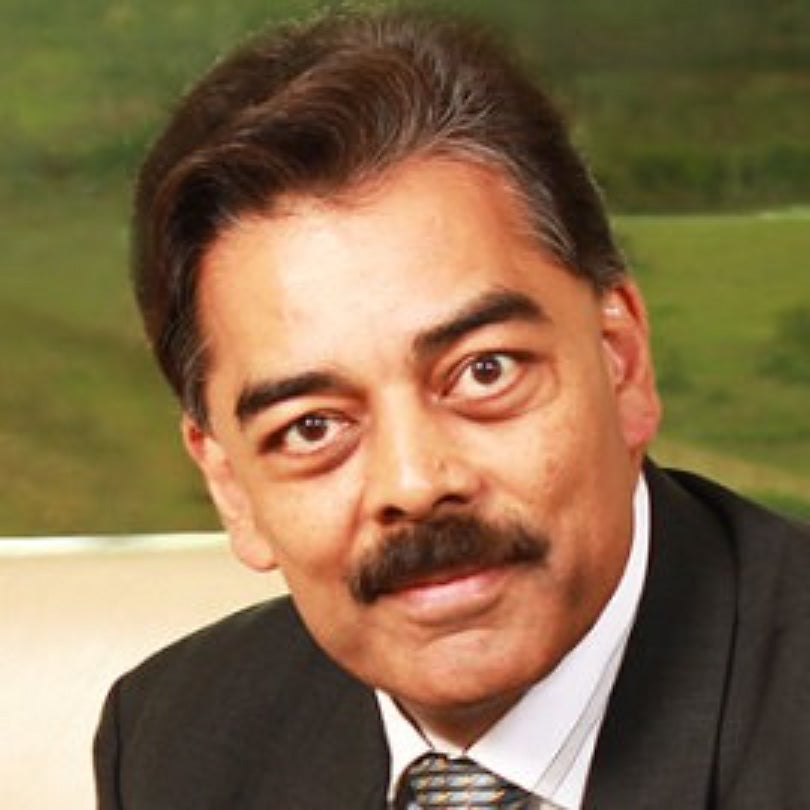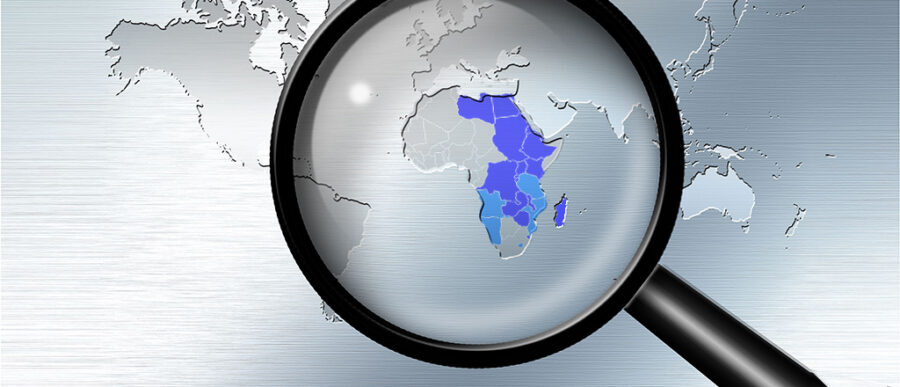 Vimal Shah is a business tycoon and CEO of Bidco, East Africa’s biggest edible oils manufacturer and a major marketer of baking, personal hygiene and cleaning products as well as animal feeds. Shah, whose father is a Bidco co-founder and Kenya’s richest man, has set even more ambitious plans for the company. He wants to grow Bidco four-fold in the next five years by getting into more product categories and expanding manufacturing. Already, Bidco is adding 1,000 employees to its 6,000 workforce as it bets on a region that it believes is still rising. Knowledge at Wharton recently spoke with Shah about where he sees his company, and Africa, heading.
Vimal Shah is a business tycoon and CEO of Bidco, East Africa’s biggest edible oils manufacturer and a major marketer of baking, personal hygiene and cleaning products as well as animal feeds. Shah, whose father is a Bidco co-founder and Kenya’s richest man, has set even more ambitious plans for the company. He wants to grow Bidco four-fold in the next five years by getting into more product categories and expanding manufacturing. Already, Bidco is adding 1,000 employees to its 6,000 workforce as it bets on a region that it believes is still rising. Knowledge at Wharton recently spoke with Shah about where he sees his company, and Africa, heading.
An edited version of the discussion follows.
Knowledge at Wharton: Could you tell us a little bit about your company and how it got started?
Vimal Shah: The company was started 30 years ago by my father, my brother and me. That was the first time we looked at consumer goods. We were mainly in the garments business. We wanted to go back in the value chain — to cotton. And then we looked at the other side of the cotton value chain which is oils, crushing seeds, and animal feeds and the whole lot. We wrote [out] a strategy, a goal actually, to go all over Africa. By 2030, we want to be No. 1 in the African markets. We’re mainly in FMCG [fast-moving consumer goods], and sell oils, fats, soaps, detergents and much more. We produce and manufacture in Kenya, Uganda, Tanzania and now Madagascar.
Knowledge at Wharton: Could you tell me about the scope of your operations and also the financials: size, number of employees and so on?
Shah: Today, we employ about 6,000 people across East Africa which will go up by another 1,000 soon. We’re about $500 million in terms of turnover in Kenya, Uganda and Tanzania. In terms of operations, we are in the full value chain, from agribusiness (where we’ve got plantations) to processing, finishing, and, of course, packaged products. We’ve got our own brands, which we market in 16 African countries in the Comesa (Common Market for Eastern and Southern Africa) region.
Knowledge at Wharton: Can you tell me about Comesa and the role it plays in helping you expand your market?
“By 2030, we want to be No. 1 in the African markets.”
Shah: There are two areas that we operate in. We are in East Africa. That is one common market today. It’s the East African community. We have a common external tariff which is actually helping us in terms of free trade. But, apart from that, we’ve got Comesa which is across Africa — from Libya and Egypt, going down straight to Zimbabwe. It includes Kenya, Uganda, Rwanda, Burundi, Malawi, Zambia, Madagascar, Mauritius and Djibouti. This whole market is now free trade, which means we can do duty-free selling in these markets as long as we’re adding value. As long as the country of origin rules are met, which means 35% local value addition, you can sell freely in all these markets. So market access is very good.
Knowledge at Wharton: Interesting. We recently published a special report on Africa and I was very struck by the fact that many African entrepreneurs seem to be taking a pan-African strategy rather than just their own country. Can you tell me a little bit about how your company developed your pan-African strategy and what were the challenges involved in implementing it?
Shah: Our goal is very clear, it’s to grab, grow and sustain market share in the African markets. When we decided on this goal, we asked ourselves: what are the markets we’re going to look at? When you look at intra-Africa trade right now, it’s not very high. It’s low. What is the biggest problem? It’s logistics. Logistics and cost of transport. The cost of doing business is high. You don’t have many providers of these services. So you’ve got to get a company that says: “I want to be in every market and I want to start trading. But I’m not just going to trade; I’m going to manufacture and produce in all these countries.” So that’s the way we looked at it.
We said we could overcome the challenges, because every country in Africa wants local industry. Every country wants to create employment. Every country wants to have something homegrown. We said, “Fine, we’ll go into those markets. We’ll be homegrown.” At the same time, we’ll do trade within Africa. We will go into countries where we can be the least-cost producer.
We look at markets and we look at demographics. The demographics of Africa are compelling. With free trade, we’ve got market access. Based on this market access, I think we’re a billion people in Africa today. It’s going to be two billion. Where are the next billion people going to get their food, clothing, shelter and everything else from? So we’ve got to start looking at production too. That’s what we are doing right now.
“Africa is still rising. It’s not a story that’s over.”
Knowledge at Wharton: What are some of the challenges you have faced in expanding to other countries? And how have you addressed those challenges?
Shah: The challenge that has come up on this issue of trading with other countries is, first, a lot of African countries have been changing policies quite often. Therefore, the predictability of economics, the predictability of where they’re going, is not always clear. No. 2, compliance levels. A lot of countries have varying degrees of compliance. Some are very compliant and some are not. So the trade practices in each country are different.
A lot of informal trade has also been happening in a lot of these countries. We go in with computerized systems, everything above board; we pay our taxes. We find challenges in some countries where this is not happening. However, the good news is that this is all changing and it’s happening fast.
Knowledge at Wharton: A couple of years ago, there was a lot of optimism about Africa — Africa rising. These days, the picture is a little more mixed. I wonder if you can give me your perspective on where you see the biggest business opportunities for entrepreneurship in Africa, especially for companies in your space?
Shah: I think Africa is still rising. It’s not a story that’s over. It’s happening. It’s there. The question is which sector — what’s happening where? The demographics speak for themselves. Urbanization is happening. Incomes are getting better and bigger. Reforms are all over. Markets are opening up.
When I look at all this, I think we just see a lot more opportunity. We’re consumer-facing. When we’re looking at consumer-facing industries, we see a lot more progress. Education levels are becoming higher. These markets have all got Internet now. They’ve all got web applications. They’ve got mobile phones. In fact, some more advanced payment systems are happening in Africa where payments are done through mobile phones.
“What we need in Africa are not harvesters; we need planters, people who come and plant for the long term.”
So Africa is still rising. That’s No. 1. No. 2, the population is increasing and income levels are going to rise. No one wants to go back to the old command-and-control type of economy. I think liberalization is also happening. When you look at all this, you’ve got to say, “I see progress.” The people who say Africa is not rising are the short-termists. What we need in Africa are not harvesters; we need planters, people who come and plant for the long term. When you get a lot of harvesters, they’ll have this narrative of, “It’s rising. Make money and get out.”
And then where do you take it? Look at the whole world today. Look at the West. Look at Europe. Look at America. Look at Asia. Where else do you have such compelling demand? Shortage of supply? Demographics? People who’ve got a whole lot of youth available? Some 70% of our population is under the age of 30. That’s a great opportunity. Africa is rising in newer fields. You’ve got many more early adopters of technology. You’ve got early adopters of the Internet and you’ve got people who are coming out with newer things. We don’t have legacy issues of big stuff that’s been happening in the past and then a resistance to change. So I think you’ve just got to look at it from a different perspective.
Knowledge at Wharton: If you look at the future of your company in say 18 to 24 months, where do you want be?
Shah: We have a clear cut five-year goal right now. We’re going to grow four times. … We’re on that path already.
Knowledge at Wharton: What will your strategy be to drive that growth?
Shah: The strategy is clear. We’re going into FMCG products — many more agencies and many more categories. At the same time, our depth and width will increase, distribution will be enhanced. But apart from distribution and selling, there will be a lot more manufacturing. There are three models. The first is the joint venture. The second, either a greenfield or a brownfield (project). There could be acquisitions too.
Knowledge at Wharton: Long term, what’s your dream for the business?
Shah: I think we will be much bigger than we are today. We have a clear company plan. It’s a 2030 goal. We’ve already set that vision. It’s all there. It’s happening. Our mission is enhancing happy and healthy living across Africa. So whatever people eat, whatever they use in their houses or on themselves, we’d like to be a part of their everyday lives.



